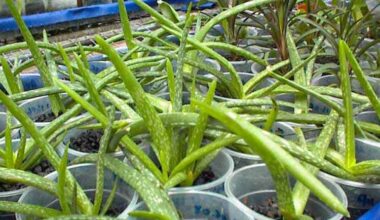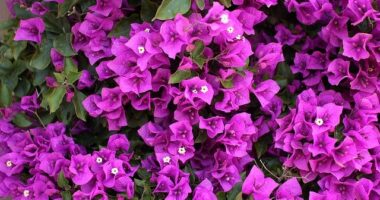Nowadays, everything is related to health care. It’s a fashionable subject that people are becoming more and more interested in. New diets without chemicals or harmful ingredients, specific exercises, vitamins, etc. are the subject of very popular research on the Net.
And even if it seems hard to believe, people are also researching plants, because in addition to being used in home remedies to relieve certain ailments, the simple fact of having them at home can help those who suffer from asthma, bronchitis, or respiratory problems in general.
Contents
11 outdoor (and indoor) plants that absorb unpleasant odors
1. Ficus
This indoor plant is robust and easy to maintain. The ficus is declined in several forms and heights: from the bonsai ficus to the big subject with immediate effect, the ficus adapts itself to all your desires!
It captures cigarette smoke, as well as the odors of glue and paint.
2. Azalea
The azaleas sold in winter to flower the apartments belong to the rhododendron family. Healthy at the time of purchase, they have the reputation of being difficult to preserve.
It decomposes the highly unpleasant and irritating odors (for the eyes and throat) of ammonia and bleach.
3. Orchid
Orchids, symbol of fecundity, are tropical plants endowed with a good resistance and rather easy to cultivate if one has a little green fingers because the concern is often to succeed in making his orchid bloom again… Orchids form the richest and most varied family of the plant world since there are more than 25,000 species!
The commercial varieties are hybrids and the most common is the Phalaenopsis: its flat and thick leaves are reminiscent of those of succulents; the butterfly-shaped flowers appear on erect flower stems.
It is a delight to eat with carbon monoxide.
4. Anthurium
The anthurium is an epiphyte plant of tropical origin of the family of the araceae. The typical species comes from the forests of Colombia. Hybrids with large red, pink or white flowers can be found in trade (garden centers, florists).
It is fond of volatile organic compounds that emanate from household and cleaning products.
5. Pelargoniums
Pelargoniums, often mistakenly named geraniums because it is a different genus from the real geranium, are herbaceous plants that can be perennial in some regions but mainly cultivated as annuals in our country. Resistant to drought, they are used in raised beds on balconies or as bedding plants.
They are known for their ability to absorb bad smells, and also for their fragrant foliage, with notes of rose, citrus, peppermint, peach, apple, apricot and cinnamon depending on the variety.
6. Scindapsus
The Scindapsus is a plant to be cultivated in suspension which humidifies the air and absorbs the pollutants, present in the materials of decoration. It can be placed in an office or a workshop. If you have just repainted a room, install it in this one.
7. Hedera
The Hedera is an invigorating and drought resistant plant. It can be installed in the kitchen, living room or office. It will be very useful to absorb the volatile components of paint, ink, plastics and detergents.
8. Dracaena
The Dracaena is a plant with long leaves more or less wide. It is installed in an entrance, a corridor or an office, without direct sun. It can absorb the following components: trichloroethylene, xylene, benzene, carbon monoxide.
9. Chamaedorea
The Chamaedorea is a dwarf palm that humidifies the air and eliminates pollutants. It is installed in a bright room, but without direct sunlight. It absorbs the components present in the air following the use of a degreaser, tobacco and the installation of agglomerated wood.
10. Chlorophytum
The Chlorophytum is a robust and very effective plant, to oxygenate a room and absorb toxic fumes. It is installed in a bright room, without direct sunlight. It can absorb carbon monoxide, xylene and formaldehyde (paint, agglomerates, tobacco smoke, household products).
11. Aloe vera
Aloe vera will eliminate much of the formaldehyde: a volatile carcinogenic compound that is among the most important pollutants of indoor air. It is mainly found in the glues used for wood panels.
Why use depolluting plants to absorb odors?
If you have specific needs and you are looking for a plant for an air polluted by this or that, I have prepared a small list of plants according to their depolluting specificities!
To fight against ammonia
Ammonia is present in our homes in the form of household cleaning products. It can cause respiratory problems, including irritation.
For your kitchen, I advise you to buy an Anthurium, ivy or ficus.
For the bathroom, opt instead for an Azalea or Cane Palm.
Against the smell of tobacco
Nothing is worse than the smell of cold tobacco. You therefore need a tobacco-purifying plant that captures the benzene from cigarette smoke, among other things.
We suggest Dracaena, Philodendron, Azalea, Ivy, Sansevière and Chlorophytum.
To humidify the air in your home
Air-conditioning, heating, hermetic insulation make that humidity has no more place in our homes. To fight against this phenomenon and to absorb the odors, we advise you: the fern, the gerbera, the pothos and still the dieffenbacchia.
These plants are known to emit water vapor. They will be sufficient to find a more humid and therefore healthier atmosphere.
To fight against the odors of paint
You have done some renovation work and you are looking for an environmentally friendly plant for the outdoors, for example. I suggest you buy a chrysanthemum or a philodendron which are excellent trichloroethylene depollutants.
To fight against formaldehyde
This preservative is not well known but is found everywhere in the home: tobacco smoke, smoke from stoves, in fabrics, furniture or cupboards, household or everyday products, it is everywhere.
A ficus, an ivy, a Scandinavian philodendron, a kentia or a Dracaena fragans will be perfect to capture this pollutant.
To fight against electromagnetic waves
We are in daily contact with computers, cell phones, printers and so on. To fight against the electromagnetic waves, I suggest you to place a depolluting plant for office in your room, a depolluting plant against the waves of telephone and wifi in your living room etc.
Among the plants depolluting against the waves one finds the ficus, the red philodendron, the beaucarnéa, the rhapis or the Pothos. At your work, place a cactus near your computer. It will absorb all magnetic waves.
Summary
By choosing depolluting plants, you can improve indoor air quality. Indeed, the plants absorb through their leaves, the pollutants present in the air.
With their roots composed of living microorganisms, they convert pollutants into organic products to feed themselves. Indeed, the plant filters and digests through its roots then transpires and emits oxygen which appears as water vapor.









